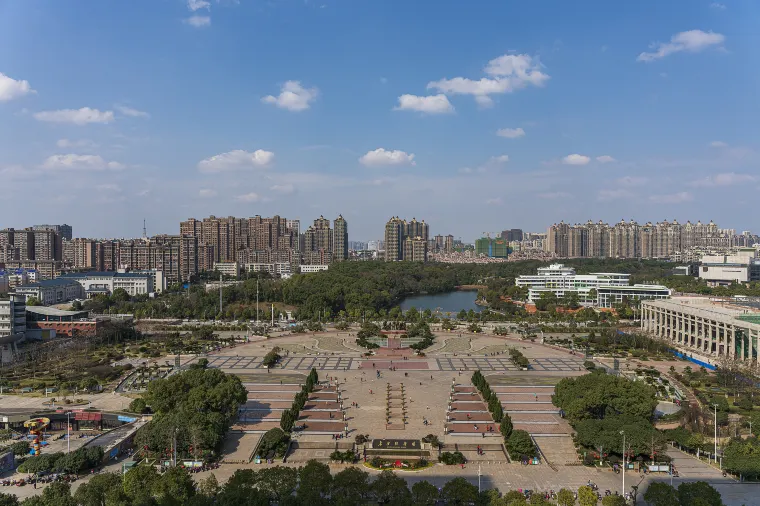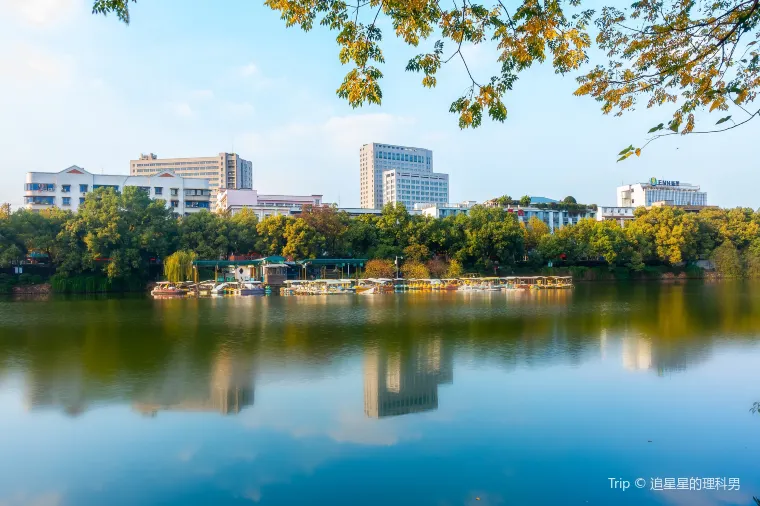Xiangtan

Partnership Agreement from 1 October 2003
Population: approximately 3 million residents
Country: People's Republic of China, Hunan Province
Location
Xiangtan is located in the heart of Hunan Province, in central China. The city is situated on the picturesque banks of the river Xiangjiang, one of the country's largest rivers. Xiangtan borders several important cities in the region, including Changsha (the capital of Hunan Province), Liuyang, Pingxiang, and Yiyang. Due to its strategic location, Xiangtan serves as an important transportation hub and economic centre for the region. The total area of the prefecture-level city is approximately 5,006 square kilometres.
History
Xiangtan's history is a compelling narrative of continuous development, from its ancient roots to its modern industrial prominence. The area's history begins with evidence of early habitation dating back to the 3rd millennium BC, with signs of the Daxi culture and later significant discoveries of Shang dynasty bronzes and Warring States period tombs. Formal city development commenced during the Three Kingdoms period, when the Eastern Wu kingdom established a city and organised the Hengyang Commandery. A pivotal moment arrived in 749 during the Tang dynasty, with the formal establishment of Xiangtan County.
Over the centuries, Xiangtan's strategic location along trade routes propelled its growth into a major commercial hub. By the Northern Song dynasty, it had become a vital trading centre, a status that flourished during the Ming and Qing dynasties, driven by the trade of rice and medicinal ingredients. Before the Second Opium War, it served as a crucial transfer point for goods, further emphasising its economic importance.
Xiangtan's historical significance is amplified by its status as the birthplace of influential figures like Mao Zedong, Qi Baishi, and Zeng Guofan. The 20th century marked a period of industrial transformation, particularly after 1949, with the development of a major industrial area on the east bank of the Xiang River, featuring textiles, electrical equipment, and iron and steel production. Today, Xiangtan stands as a modern industrial city that preserves its historical legacy, serving as an important economic centre in Hunan Province and a destination for those interested in Chinese history and culture.
Economy
Xiangtan is one of the main industrial cities in Hunan Province, hosting a number of large and medium-sized industrial enterprises, including Xiangtan Iron and Steel Enterprise, Shaofeng Cement Group, and Hunan Cable Group. The city's appearance changes every year. Its improved infrastructure network, comprising well-maintained roads, convenient transportation, and reliable water, gas, and electricity supplies, along with environmental protection initiatives, gardens, and greenery, provides favourable conditions for investment.

Tourism
Xiangtan offers a compelling blend of historical significance and cultural experiences, making it a noteworthy destination for tourists. The city's most prominent attraction is undoubtedly Shaoshan, the birthplace of Mao Zedong, where visitors can explore his former residence and the Shaoshan Mao Zedong Memorial Museum, gaining deep insights into his life and legacy. The "Most Memorable Shaoshan" live performance further enriches the historical experience. Nearby, Dishui Cave provides a scenic escape with its natural beauty and historical undertones. Art enthusiasts will find Qi Baishi's Former Residence a captivating site, offering a glimpse into the life of the renowned Chinese painter. Beyond these key landmarks, Xiangtan boasts various parks and scenic areas that provide opportunities for relaxation and exploration, while its strategic location within Hunan Province allows for easy access to other regional attractions, including those in Changsha.
